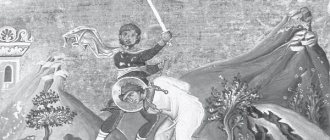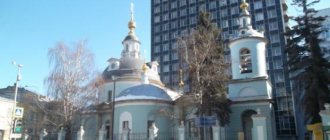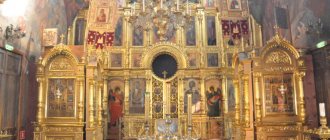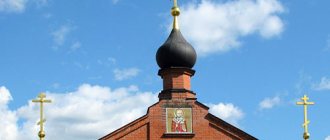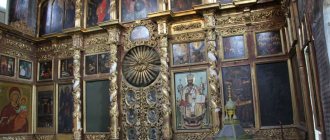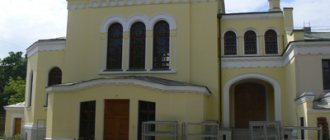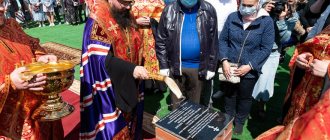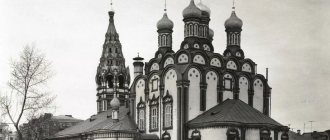Mir
Russia Moscow Church of St. Spyridon of Trimifuntsky in Nagatinsky Zaton (Moscow) Map is loading…
{"format":"leaflet","minzoom":false,"maxzoom":false,"limit":50,"offset":0,"link":"all","sort":[""], "order":[],"headers":"show","mainlabel":"","intro":"","outro":"","searchlabel":"\u2026 \u0441\u043b\u0435\ u0434\u0443\u044e\u0449\u0438\u0435 \u0440\u0435\u0437\u0443\u043b\u044c\u0442\u0430\u0442\u044b","default":"","import-annotation":false,"width ":"auto","height":"350px","centre":{"text":"","title":"""link":"""lat":55.68889399999999767487679491750895977020263671875,"lon": 37.6954980000000006157279131002724170684814453125,"icon":""},"title":"","label":"","icon":"","lines":[],"polygons":[],"circles":[ ],"rectangles":[],"copycoords":false,"static":false,"zoom":8,"defzoom":14,"layers":["OpenStreetMap"],"image layers":[] ,"overlays":[],"resizable":false,"fullscreen":true,"scrollwheelzoom":true,"cluster":false,"clustermaxzoom":9,"clusterzoomonclick":true,"clustermaxradius":80, "clusterspiderfy":true,"geojson":"","clicktarget":"","showtitle":true,"hidenamespace":false,"template":"","userparam":"","activeicon": "","pagelabel":false,"ajaxcoordproperty":"","ajaxquery":"","locations":[{"text":"\u003Cb\u003E\u003Ca href=\"/palomnik/%D0% A5%D1%80%D0%B0%D0%BC_%D1%81%D0%B2%D1%8F%D1%82%D0%B8%D1%82%D0%B5%D0%BB%D1%8F_% D0%A1%D0%BF%D0%B8%D1%80%D0%B8%D0%B4%D0%BE%D0%BD%D0%B0_%D0%A2%D1%80%D0%B8%D0% BC%D0%B8%D1%84%D1%83%D0%BD%D1%82%D1%81%D0%BA%D0%BE%D0%B3%D0%BE_%D0%B2_%D0%9D% D0%B0%D0%B3%D0%B0%D1%82%D0%B8%D0%BD%D1%81%D0%BA%D0%BE%D0%BC_%D0%97%D0%B0%D1% 82%D0%BE%D0%BD%D0%B5_(%D0%9C%D0%BE%D1%81%D0%BA%D0%B2%D0%B0)\» title=\»\u0425\u0440\ u0430\u043c \u0441\u0432\u044f\u0442\u0438\u0442\u0435\u043b\u044f \u0421\u043f\u0438\u0440\u0438\u0434\u043e\u043d\u0430 \u 0422\u0440\u0438\u043c\u0438\ u0444\u0443\u043d\u0442\u0441\u043a\u043e\u0433\u043e\u0432\u041d\u0430\u0433\u0430\u0442\u0438\u043d\u0441\u043a\u043e\u0 43c\u0417\u0430\u0442\u043e\ u043d\u0435 (\u041c\u043e\u0441\u043a\u0432\u0430)\»\u003E\u0425\u0440\u0430\u043c \u0441\u0432\u044f\u0442\u0438\u0442\u0435 \u043b\u044f \u0421\ u043f\u0438\u0440\u0438\u0434\u043e\u043d\u0430 \u0422\u0440\u0438\u043c\u0438\u0444\u0443\u043d\u0442\u0441\u043a\u043e\u04 33\u043e\u0432\u041d\u0430\ u0433\u0430\u0442\u0438\u043d\u0441\u043a\u043e\u043c \u0417\u0430\u0442\u043e\u043d\u0435 (\u041c\u043e\u0441\u043a\u0432\u0 430)\u003C/a\u003E\ u003C/b\u003E\u003Chr /\u003E\u003Ca href=\"/palomnik/%D0%A1%D0%B2%D0%BE%D0%B9%D1%81%D1%82%D0%B2%D0% BE:%D0%90%D0%BD%D0%BD%D0%BE%D1%82%D0%B0%D1%86%D0%B8%D1%8F\» title=\»\u0421\u0432\u043e \u0439\u0441\u0442\u0432\u043e:\u0410\u043d\u043d\u043e\u0442\u0430\u0446\u0438\u044f\»\u003E\u0410\u043d\u043d\u043e\u0442 \u0430\u0446\u0438\ u044f\u003C/a\u003E: \u043f\u0440\u0430\u0432\u043e\u0441\u043b\u0430\u0432\u043d\u044b\u0439 \u0445\u0440\u0430\u043c \u043 2\u041c\u043e\u0441\u043a \u0432\u0435, \u0432\u0445\u043e\u0434\u0438\u0442 \u0432 \u0441\u043e\u0441\u0442\u0430\u0432 \u0414\u0430\u043d\u0438\u04 3b\u043e\u0432\u0441\u043a\ u043e\u0433\u043e \u0431\u043b\u0430\u0433\u043e\u0447\u0438\u043d\u0438\u044f \u041c\u043e\u0441\u043a\u043e\u0432\u0441\u0 43a\u043e\u0439 \u0433\u043e\ u0440\u043e\u0434\u0441\u043a\u043e\u0439 \u0435\u043f\u0430\u0440\u0445\u0438\u0438.","title":"\u0425\u0440\u0430\u043c \u0441\u 0432\u044f\ u0442\u0438\u0442\u0435\u043b\u044f \u0421\u043f\u0438\u0440\u0438\u0434\u043e\u043d\u0430 \u0422\u0440\u0438\u043c\u0438\u0 444\u0443\u043d\u0442\u0441\ u043a\u043e\u0433\u043e \u0432 \u041d\u0430\u0433\u0430\u0442\u0438\u043d\u0441\u043a\u043e\u043c \u0417\u0430\u0442\u043e\u 043d\u0435 (\u041c\u043e\u0441 \u043a\u0432\u0430)","link":"","lat":55.68889399999999767487679491750895977020263671875,"lon":37.69549800000000061572791310027241706 84814453125,"icon":""}],,"imageLayers":[]}
55.688883; 37.695474
Russia, Moscow, Sudostroitelnaya street, 50
Moscow
Russia
Telephone:
+7 968 723 59 20
Temple of St. Spyridon of Trimifuntsky
- an Orthodox church in Moscow, part of the Danilovsky deanery of the Moscow city diocese.
History[edit]
On November 22, 2011, with the blessing of Archbishop Arseny of Istra, a temporary (small) church was consecrated, and then the first Liturgy was celebrated. The dean of the Danilovsky district, Archpriest Oleg Vorobyov, and the rector, Priest Mikhail Shmanov, served.
The solemn service took place on the holiday in honor of the icon of the Mother of God “Quick to Hear.” And this week we served the second festive Liturgy in honor of Nikon of Radonezh, a disciple of St. Sergius of Radonezh.
“Residents of nearby houses are incredibly happy that our liturgical life is gradually developing,” notes Father Mikhail. “People are already coming to me with questions about when they can come and baptize babies.” Many people ask: “When will we take unction? And then the fast has already begun. Will we celebrate Christmas, Epiphany, and bless water?”
Father himself is surprised at the number of people “who from the first days reached out to us and spontaneously formed a community of the shrine that was just being built.” He says that he “didn’t expect such powerful support.” According to him, the internal life of the temple is organized “by the labors of the parishioners themselves.” They wash the floors and clean the area. And they are always wondering what else they can do to help. “It is significant that these are not only elderly people, but also young people,” continues the abbot. “And people keep coming and coming to us.” Those who do not yet know about the construction are told by their neighbors. Good news is passed on from mouth to mouth. Now we think that a temporary temple in the form of one military tent is not enough.”
The builders are also already accustomed to the fact that every day after the prayer service, Father Mikhail goes to illuminate the site, and they line up in a row in advance, take off their helmets, showing that they are ready to take an active part in this process.
The first patronal holiday was celebrated on December 25, 2011. “The stone walls of the large temple have not yet been erected, but the prayer walls are already standing firmly,” says the rector of the shrine under construction, Priest Mikhail Shmanov. The festive Divine Liturgy was celebrated in the temporary chapel. The service was led by the dean of the Danilovsky district, Archpriest Oleg Vorobyov. Concelebrating with him were Father Mikhail and Priest Alexy Stenechkin. There were so many who came to pray - about 300 (!) people that not everyone could fit in the small room. Therefore, speakers were installed outside, as well as a screen and projector for video broadcasting of the service. “The most gratifying thing is to realize,” the rector emphasized, “that on such a day people came not just to pray, but also to partake of the Mysteries of Christ! Almost the entire church participated in the Sacrament of the Eucharist! And three (!) Chalices were brought out for Communion - not even in all large churches this happens!” After the service, all worshipers were treated to a treat - homemade pies with hot tea. And the day before, on Saturday, builders began pouring the foundation. On January 8, 2012, the Sacrament of Baptism was performed in a temporary church. The first certificate was received by a one and a half month old baby with the rare name Eleazar, named in honor of the righteous Eleazar, a descendant of Jacob, the son of Isaac.
On January 7, the Divine Liturgy was served in a temporary church. “The long-awaited Feast of the Nativity of Christ has come for every Christian! – Father Mikhail said in his sermon. — Many people gathered today in our House of God to glorify the Bright Christmas of our Savior Jesus Christ. The Savior of the world, who delivered us from curse and death and gave us eternal life. The heart of each of us is filled with love, which we bring as a gift to the newborn Baby.”
On March 27, 2012, His Holiness Patriarch Kirill of Moscow and All Rus', concelebrating with the Moscow clergy, consecrated the foundation stone at the site of construction of a new church in honor of St. Spyridon. At that moment, when the Primate of the Russian Orthodox Church began to sprinkle the stone with holy water, the cloudy sky suddenly brightened, and the sun appeared from behind the clouds. The crowd began to nudge each other, pointing to the parting clouds, and congratulating each other, rejoicing at the good sign.
On June 20, 2012, a small belfry was installed. After construction is completed, the new bells will take their place on the church belfry and continue their service.
The territory of the complex is also gradually being improved, and by the efforts of the community itself. Volunteers planted flower beds and planted birch trees, which are gradually taking root.
On September 15, 2012, the first gilded dome crowned the Church of St. Spyridon.
On the Exaltation of the Precious and Life-Giving Cross of the Lord on September 27, 2012, another golden dome adorned the temple. The main dome of the shrine is crowned with a unique illuminated cross.
“The cross was made especially for this church. There are no such people anymore, not only in the Program, but nowhere else at all. The height of the cross is 4.5 meters, it is decorated with a gilded openwork pattern, but the main feature is colored glass inserts equipped with LEDs. They glow in the dark,” Vladimir Resin told reporters.
The idea of making such an unusual cross belongs to the rector, priest Mikhail Shmanov, and the parish. “With strict adherence to all church canons, here we see a vivid example of how 21st century technologies are used in modern church architecture,” Fr.
Schedule of services
Pilgrims can visit the temple any day - it is open from 8 am to 8 pm. Tourists can explore the church, listen to a tour and honor the shrines that are kept here. Among them:
- part of the relics of St. Spyridon and his shoes;
- part of the relics of Archbishop Luke of Crimea;
- part of the relics of Sschmch. Harlampy;
- icon of the holy martyrs. Boris and Gleb.
All shrines are in the public domain and can be easily viewed when visiting the church. Pilgrims can also take part in regular services that take place as scheduled:
- From Monday to Saturday morning service at 8:00 (including confession) and evening service at 17:00 (with reading of the akathist). On Saturday from 17:00 the all-night vigil begins.
- On Sunday, the Divine Liturgy begins at 9:00 am.
- In addition to church-wide Christian celebrations (Christmas and Easter), the patronal feast of the patron saint, Saint Spyridon of Trimythous, is celebrated here every year. The day of his memory is solemnly accompanied by festive services on December 25, the day of the winter solstice.
Patriarchal service in the Church of St. Spyridon of Trimifuntsky
The services are led by priest and rector Mikhail Shmanov, who also took part in creating the design of the complex, in particular, he developed the original cross on the main dome.
Activities of the parish[edit]
- Sunday School
The Sunday school conducts weekly classes for children, which study the Law of God, the Fundamentals of Christian Morality, the Church Slavonic language, the History of the Christian Church and other subjects. There are also classes in singing, choreography, and fine arts. Our teachers have theological and special education.
In addition to the main classes, children, if desired, can attend additional developmental clubs in vocals, piano, guitar, English, handicrafts, home economics, chess and much more.
Sunday school pupils take an active part in church holidays and events, Christmas and Easter holidays, visit museums, and make pilgrimage trips to Holy places.
Modern life of the monastery
Now Danilov is a stauropegial monastery, that is, subordinate directly to the Patriarch.
Residence of the Patriarch
It was built in 1983-1988. in the west of the monastery. Since 2009, it was necessary to carry out a major overhaul of the building, which began to collapse, apparently due to the mistakes of Soviet builders. Now Bishops' Councils and Synod meetings are held here. The Primate of the Russian Church also lives here.
Viceroy and brethren
On May 10, 1992, the brethren were headed by Archimandrite Alexy (Polikarpov) , a monk of the Trinity-Sergius Lavra. He continues to lead the monastery to the present day - already as a suffragan bishop. March 18, 2022 Patriarch Kirill congratulated Bishop on the 50th anniversary of his monastic tonsure.
The brethren lead their lives according to the Rules of the Monastery of St. Sergius, especially since many, like the governor, began their monastic path there. The obedience of the monks is determined by the variety of services that the monastery now performs. They work here:
- workshops (icon painting, jewelry, framing, carpentry);
- bakery;
- apiary;
- publishing house;
- a bell center with a school of bell ringers, which annually holds bell ringing festivals.
Choir
The monastery was famous for it even before the revolution. It was possible to revive the tradition in 1989. The first regent, abbot Toviy (Glazyrin), invited professional singers to work. Now the team has 30 members. They have repeatedly taken high places in international competitions and constantly travel around the country.
Regency courses
They have been open since 1998 and are now considered one of the best in the country. Graduates carry out regency obedience in churches in Moscow and other cities.
Orthodox rehabilitation
It has existed since 2006, headed by its resident Danilov, abbot Jonah (Zaimovsky) . Here they help those suffering from wine drinking, drug addiction, and other addictions. In addition to the monastery, there is one at the Church of the Archangel Michael in Zhukovsky and the drug treatment clinic No. 2 of the capital.
How to get there[edit]
Address:
115407, Moscow, Sudostroitelnaya street, 48
Telephone:
+7 968 723 59 20
Directions:
from Art. m. Kolomenskaya:
- Bus number 724 towards Nagatinskaya embankment, to the stop “Sudostroitelnaya str., 48” (formerly “Prodmag”, 5th stop).
- By any tram (No. 35, 47) to the final stop "Nagatino". Further walk along the street. Shipbuilding in the direction of Nagatinskaya embankment (landmark: opposite the Pyaterochka store, building 59)
Where is the Danilovsky Monastery located in Moscow?
Its location can be defined as the historical center of the capital, but Red Square from here is a full 5 km to the south.
Address
The monastery is located on Danilovsky Val Street, 22.
How to get there
Traditionally, the fastest mode of transport in a metropolis is the metro. This is the easiest way to get to the monastery from any district of the capital. In addition, there are bus and tram stops relatively close to its walls.
Nearest metro station
There are no stations directly next to the monastery: the nearest, Tulskaya, is almost a kilometer away.
Walking from it, the easiest way to get there is through the park, where the chapel of St. Daniel. Then you should go out onto Danilovsky Val Street and turn right.
From Shabolovskaya and Serpukhovskaya you will have to walk twice as far. Those who are in a hurry to attend a service can use other modes of transport in addition to the metro.
View of the Danilov Monastery from the street
Tram, bus
From Tulskaya, passing through the park, you can go to the tram stop No. 3 “Serpukhovskaya Zastava”. The next station is called: “St. Danilov Monastery”. Trams 39 and 26 also go there. The same trams will take the pilgrim from the Shabolovskaya metro station, as well as from the Paveletsky station - this is where Aeroexpress trains arrive from Domodedovo airport.
Buses run from Serpukhovskaya station - routes t71, 41, 700.
Shrines of the church
The Church of St. Spyridon of Trimifuntsky in Nagatinsky Zaton does not have such a large number of shrines and relics as in the main Orthodox churches of Moscow, however, the following relics are located here:
Icon of the holy martyrs Boris and Gleb. This ancient holy icon was brought as a gift to the church of St. Spyridon, Bishop of Trimifuntsky, in Nagatinsky Zaton, Moscow, from the church of the holy martyrs Boris and Gleb, in Vyshgorodka, Pskov region, in the summer of 2011 from the Nativity of Christ.
A piece of the holy relics of the Hieromartyr Harlampius. They pray to him for healing from various ailments and illnesses, from sudden and sudden death, as well as for the fertility of the earth.
A piece of the holy relics of Archbishop Luke of Crimea. A person has to live with many diseases. And who should we ask for help if not from Our Lord Jesus Christ, the Most Holy Theotokos and the saints of God! Saint Luke, being a surgeon and anesthesiologist, during his earthly life helped people a lot with illnesses, and the saint still helps those who pray to him and ask him for help.
A slipper and a piece of the holy relics of Spyridon of Trimythous. The miracle is that St. Spyridon of Trimifuntsky himself to this day never ceases to “wander,” helping everyone who turns to him with faith in prayer. He is revered as a “walking” saint - the velvet shoes worn on his feet wear out and are replaced several times a year with new ones. And the worn-out shoes are cut into pieces and handed over to believers as a great shrine. According to the testimony of the Greek clergy, during the “change of shoes” a response movement is felt.
Architectural ensemble of the temple
The Temple of Spyridon of Trimifuntsky in Nagatinsky Zaton is a five-domed, three-apse quadrangle. Its decoration was created in the best traditions of Vladimir-Suzdal architecture of the 12th century. The team of architects was headed by the famous Soviet and Russian architect Yuri Panteleimonovich Grigoriev. V.V. also worked on his team. Boyko and V.B. Shumov.
The Temple of Spyridon of Trimifuntsky in the Nagatinsky backwater is a modern building and was created by a group of experienced architects
Adjacent to the main volume of the temple building is a faceted semi-dome called a conkhoy. The white stone building of the temple does not contain any complex or intricate decor - its appearance is as simple as a conversation with God.
The exterior decoration of the temple bears light notes of southern Russian and Roman architecture, which were continued by the Vladimir-Suzdal masters, and the load-bearing walls are more than 13 meters high. Against the background of white walls, the onion domes shimmer uniquely, playing with light, which makes the temple visible to parishioners from afar.
The temple area is more than 2200 sq.m. and includes a parable house, an economic block, a parochial school and the temple itself. Next to the architectural complex on the shore of the Western Bay is the Church of the Icon of the Mother of God Quick to Hear.
Other "Danilovskys"
Monastery of St. Daniila is unique, the only one in Russia. However, there are regions with which the noble prince came into contact in one way or another during his earthly life. Some of them have preserved toponyms associated with him, and in some places there are monastic communities whose names include the name of the saint.
Kazan Convent on Gorushka
It is called Danilovsky after the city - now the regional center of the Yaroslavl region. Once - a village, this is the place where the prince once stayed. Later, princely mansions were built here, and the place was nicknamed Danilovskaya Sloboda, and from 1777 - the city of Danilov. The Monastery of the Kazan Icon of the Mother of God arose with the blessing of the rights. John of Kronstadt since 1894, first as the Danilovskaya women's community.
Here since the 1900s. Construction began on the first three-altar church on Danilovskaya land. It was possible to consecrate it only in 1918, when the civil war was already raging across the country. Soon the monastery was closed. Now monastic life is being revived here.
In Pushkinsky district
There is a village named after the prince in the Pushkinsky district of the Moscow region. It is mentioned in the will of the son of St. Daniel, Ivan Kalita, therefore, is directly related to the Moscow prince. Since 2009, a chapel has been operating here. Daniil of Moscow.
Interesting Facts
The Eminence of the western district of the Moscow region recorded 4 cases of miraculous healing on the day of remembrance of the saint:
1. A six-year-old boy’s temperature, which had been burning him for 23 days, returned to normal. Recovery occurred after a prayer service with blessing of water.
2. At the end of the religious procession, the swelling around the throat of a 1.5 month old child subsided (doctors diagnosed “mumps”).
63. A 3-year-old woman prayed to the saint for healing of bleeding. After the meal at the patronal feast, the epithelium of the blood vessels coagulated and the disease went away.
4. A young guy who suffered from diathesis and psoriasis from birth was cured after Confession, receiving the Holy Sacraments, and Oil of Unction.

